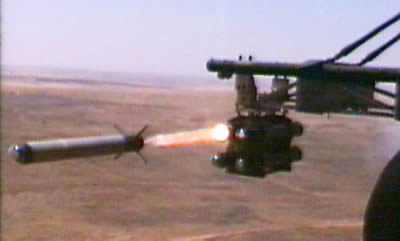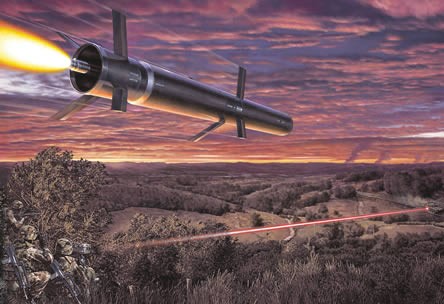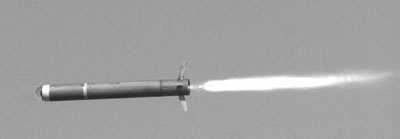Laser guided weapons, such as the Lockheed Martin Hellfire, and Lahat and Nimrod, developed by IAI/MBT offer many advantages for heliborne and airborne use. The SAL seeker is relatively low cost, offering high precision operational flexibility, despite its adverse weather limitations.
Integration with into net-centric operations enables combined forces to overcome most of the limitations inherent to laser guided weapons, as missiles can be fired ‘blind’ into ‘basket’ where line of sight with the target is assured, enabling the seeker to lock on the designated target. This concept of operation places high priority on target designation capabilities, deployed close to the target by unmanned platforms and Special Forces. Not every laser seeker will be suitable for the task. Only the more sophisticated missiles offer the flexibility and field of regard (‘side looking’) capability adequate for effective lock-on after launch targeting. Such capability seldom requires their seeker to be mounted on a gimbal, to achieve adequate field of regard, something that simple, low-cost stiff-necked or static seeker assemblies may not support.
 The LAHAT laser guided missile is lightweight weapon can be employed by light helicopters. It can be fired at targets over distances between 8 to 13 kilometers, with devastating effects against armor as well as softer targets. Besides its potential helicopter application, LAHAT is considered by several armies for its original role as gun-fired laser-homing munition for tanks. Nimrod, a much larger missile, is operational with the IDF and has also been evaluated as a helicopter borne weapon. Utilizing its extended range (over 22 km), this missile is often used in ‘lock on after launch’ mode, combining inertial guidance and semi-active laser homing to strike targets at long ranges. The Israelis are employing their Nimrods primarily as ground launched weapons, but an airborne version, carried on helicopters such as the CH-53 was also tested. Although unconfirmed by official sources, both laser-guided weapons were employed in combat for several years.
The LAHAT laser guided missile is lightweight weapon can be employed by light helicopters. It can be fired at targets over distances between 8 to 13 kilometers, with devastating effects against armor as well as softer targets. Besides its potential helicopter application, LAHAT is considered by several armies for its original role as gun-fired laser-homing munition for tanks. Nimrod, a much larger missile, is operational with the IDF and has also been evaluated as a helicopter borne weapon. Utilizing its extended range (over 22 km), this missile is often used in ‘lock on after launch’ mode, combining inertial guidance and semi-active laser homing to strike targets at long ranges. The Israelis are employing their Nimrods primarily as ground launched weapons, but an airborne version, carried on helicopters such as the CH-53 was also tested. Although unconfirmed by official sources, both laser-guided weapons were employed in combat for several years.
With the availability of such ‘net centric’ precision attack missiles, the role of attack helicopters is also re-examined, and several air forces and manufacturers are already considering using assault helicopters for some attack roles, employed either as a ‘sky truck’ or in direct support, when they are fitted with target acquisition systems. Examples for such approaches are the modified Mi-8/17s, the development of the Rumanian Puma and the new multi-role/attack version of the Black Hawk.
Additional parts of this article:



















